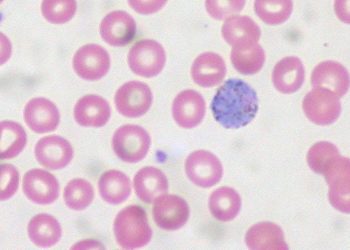Cancer risk linked to indoor residential pesticide exposure
1. This meta-analysis found that exposure to indoor pesticide use was associated with a significant increase in childhood leukemia and lymphoma risk. Herbicide exposure was also associated with an increased risk of leukemia.
2. Though not statistically significant, there was a positive association between pesticide and herbicide use in the home with childhood brain tumors.
Evidence Rating Level: 2 (Good)
Study Rundown: Pesticides such as insecticides and herbicides are widely used chemical control agents in agricultural, industrial, institutional and domestic settings. While these substances remain essential, there are great concerns about their effects on children’s health. A surfeit of studies has drawn a clear connection between pesticide exposure and cancer risk in children. However “exposure” has largely been attributed to parental occupational or agricultural contact. This study is the first to conduct a meta-analysis of the effects of residential pesticide exposure on childhood cancer risk. After extracting data from recent epidemiological studies, the authors found a statistically significant positive relationship between indoor exposure to pesticides and childhood leukemia and lymphoma risk. A similar relationship was uncovered between herbicide use and leukemia as well. There was also a positive, though not statistically significant, association between childhood brain tumors and both herbicide and indoor pesticide use. There was no significant relationship between exposure to outdoor pesticides and childhood cancers. Though limited by the low number of studies included in the analysis, this study indicates a need to educate families on limiting children’s exposure to pesticides in the home.
Click to read the study published in Pediatrics
Relevant Reading: Potential health effects related to pesticide use on athletic fields
In-Depth [meta-analysis]: This study included 16 case-controlled epidemiological studies conducted from 1993 through 2012 on residential pesticide, herbicide, and insecticide exposure and childhood cancer. Sample sizes ranged from 45 to 1184 cases, and upper age limits of cases ranged from 9 to 19 years. Ten studies focused on leukemias/lymphomas, 5 on brain tumors, and 2 on Wilms tumor/neuroblastoma. Pesticides were categorized by location of use (indoor or outdoor) and type (insecticide, herbicide). Overall, children exposed to indoor residential insecticides had a significantly increased risk of developing childhood leukemia and lymphomas (OR = 1.47; 95%CI 1.26-1.72 and OR = 1.43; 95%CI 1.15-1.78, respectively). Exposure to herbicides was associated with a statistically significant risk for leukemia (OR = 1.26; 95%CI 1.10-1.44). Residential herbicide exposure was associated with an increased risk in all types of childhood cancers (OR = 1.35; 95%CI 1.16-1.55). There was a positive association between pesticide exposure and childhood brain tumors, though this relationship was not statistically significant (OR = 1.22; 95%CI 0.83-1.81). There was no statistically significant relationship between outdoor pesticide exposure and childhood cancer.
Image: PD
©2015 2 Minute Medicine, Inc. All rights reserved. No works may be reproduced without expressed written consent from 2 Minute Medicine, Inc. Inquire about licensing here. No article should be construed as medical advice and is not intended as such by the authors or by 2 Minute Medicine, Inc.


![Nanoparticles targeting immune cell surface proteins may protect from sepsis [PreClinical]](https://www.2minutemedicine.com/wp-content/uploads/2015/09/18169_lores-75x75.jpg)

